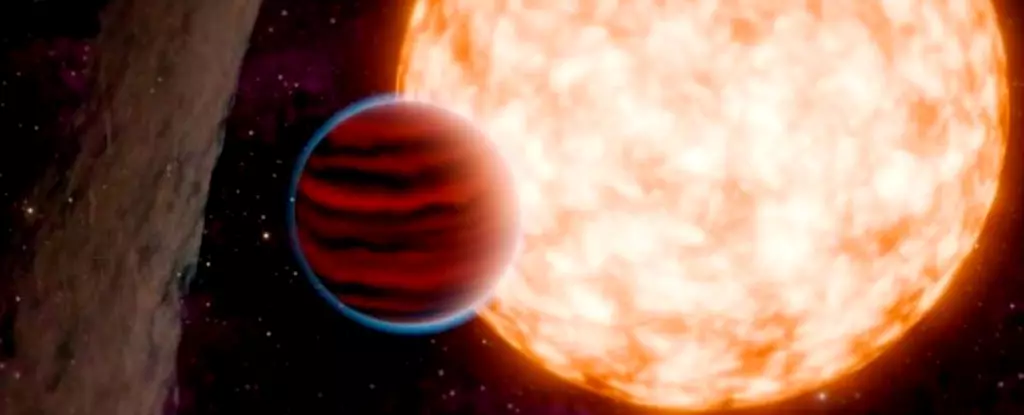In a remarkable leap for planetary science, astronomers have unveiled TIDYE-1b, one of the youngest planets ever discovered, estimated to be only about 3 million years old. This fascinating celestial body, also known as IRAS 04125+2902 b, stands in stark contrast to Earth, which is approximately 4.5 billion years old—making TIDYE-1b a mere infant of just 0.00067% of our planet’s age. The implications of this discovery are profound, opening new avenues for understanding the complex processes involved in planetary formation and challenging existing astrophysical models.
Astronomer Madyson Barber of UNC-Chapel Hill, the lead author of a groundbreaking study on TIDYE-1b, emphasizes how this discovery allows scientists to peer deep into time and space, providing a unique perspective on the formation and evolution of planetary systems. “Astronomy helps us explore our place in the Universe—where we came from and where we might be going,” she explains. Discoveries like TIDYE-1b enhance our comprehension of celestial development at its nascent stages, a crucial factor in refining theories surrounding planetary formation.
The method by which TIDYE-1b was discovered is equally fascinating. Utilizing the transit method, astronomers detected the planet as it passed in front of its host star, causing a minute dimming of stellar light observable from Earth. This approach, employed by NASA’s TESS (Transiting Exoplanet Survey Satellite), has led to the discovery of numerous young planets, predominantly ranging from 10 to 40 million years old. However, TIDYE-1b stands out as a significant exception, being the youngest of its kind.
One of the most astonishing characteristics of TIDYE-1b is its direct exposure amid the debris of its protoplanetary disc—typically a swirling mass of gas and dust that rotates around a young star. Such debris usually conceals newborn planets, rendering them invisible to astronomers for millions of years. Yet, TIDYE-1b’s unique orbital configuration allows it to escape this shroud, offering scientists a glimpse into an otherwise obscured evolutionary phase of planetary systems.
The discovery of TIDYE-1b has also prompted critical questions regarding the conventional understanding of protoplanetary discs. Traditionally, it was believed that planets form from a flat, circular disc of material, leading to the alignment of planets in what is informally referred to as a ‘pancake-flat’ arrangement. However, the TIDYE-1b finding reveals a misaligned protoplanetary disc in relation to both the planet and its host star. This misalignment presents a significant challenge to existing models and suggests that planetary formation may occur under a broader variety of conditions than previously understood.
The unique characteristics of TIDYE-1b, orbiting its star in a mere nine days, suggest that it could evolve into a type of planet known as a ‘super-Earth’ or ‘sub-Neptune.’ These classifications are representative of a burgeoning category of exoplanets that, intriguingly, do not reside within our solar system yet contribute significantly to our understanding of planet diversity within the Milky Way galaxy.
While TIDYE-1b is not as dense as Earth, its diameter is nearly 11 times larger. This striking difference has implications not only for the scientific community’s understanding of planetary density and composition but also poses fresh questions about the conditions necessary for planet formation in various environments across the cosmos. The acceptance of planets existing at a much younger age than initially comprehended broadens our perspective on what exists in the universe and motivates further investigative efforts.
The discovery of TIDYE-1b heralds a new era in exoplanetary research, illuminating the primordial processes that give birth to planets. As astronomy continues to evolve, such findings affirm the importance of probing deep into our universe, suggesting that there is much more to discover beneath the layers of dust that often obscure our view. This milestone not only refines our existing models but also inspires future investigations into the mysteries of planetary genesis, reaffirming astronomy’s central role in understanding our place in an ever-expanding universe.


Leave a Reply